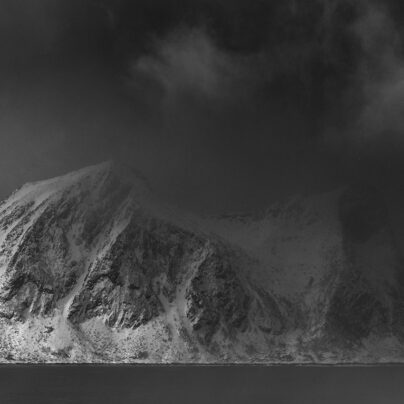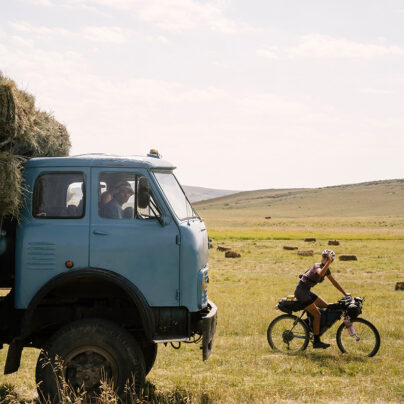Chasing Silence
Ángel Grimaldi’s lifelong quest to capture breathtaking images of the ocean to inspire others,
seek the harmony and silence of nature, and help conserve fragile ecosystems.
Words and images: Ángel Grimaldi
Chasing silence has become an obsession, a therapy, an essential part of my personality, a necessity for good mental health – and a powerful tool for conservation. I’d been seeking these rare moments of silent communion with wild creatures ever since a close encounter with a female tiger shark off Cocos Island, which Jacques Cousteau called the most beautiful island on the planet, but from the isolated steppes of Kazakhstan to the Annapurna mountains nothing seemed to totally fulfil my spirit and calm my mind. Seeking these moments has given my career its shape.
***
Antarctica, 2019. After a rollercoaster of emotions, several days travelling from Australia to the southern end of Patagonia and two days crossing the legendary Drake Passage, it was hard to believe that I was actually there, anchored in front of an iceberg graveyard. I could feel the cold breeze burning the skin on my cheeks, I felt the beginning of tears behind my eyes, and I couldn’t decide if I were dreaming or not.
I found it impossible to hide my excitement as we put the zodiacs in the water, checked the safety gear, and marked the position on my GPS. Snow was drifting slowly down from the sky, fat flakes plopping and vanishing in the water’s calm surface, and we had a mission: explore a bay full of ancient icebergs. As we left the ship heading to the heart of the bay, the zodiac painted ripples on the glassy water. We were cruising in silence. With the clouds blocking the sun, I couldn’t tell if it were midday or sunset.
Her huge dark eyes scrutinised every inch of us, looking through the deepest part of our souls. We were aliens on her planet. No more shivering, no more pain in my knuckles, no more burning of cold on my cheeks – just silence.
After half an hour gliding along with breathtaking ice giants, I spotted a creature through my binoculars 300m away. Behind one of the enormous pieces of ice was a dark silhouette lying peacefully on the snow. My heart accelerated as we approached. Once close enough I switched off my engine and drifted, trying not to disturb the wildlife. I saw spotted fur, big head, a robust neck. A large female leopard seal lifted her reptilian head, looked at us, then rolled her head slowly from one side to another. Her huge dark eyes scrutinised every inch of us, looking through the deepest part of our souls. We were aliens on her planet. No more shivering, no more pain in my knuckles, no more burning of cold on my cheeks – just silence. Time seemed to stop. The snowflakes were now levitating. Those few seconds of coexistence made me realise that I was in exactly the right place. Nothing brings you closer to the present moment than eye contact with a wild creature, and that moment of connection with one of the top predators of the ecosystem left me with an immense feeling of gratitude.


Close interactions with wild creatures woke something inside me; something we all have, but it’s difficult to find in this modern existence. Just as E.O. Wilson proposed in his theory of biophilia, we have an inherent urge to connect to wildlife and wild places. I believe that falling in love with nature is inevitable for the human soul, and that only by feeling we are part of nature will we realise its importance and fight to protect it.
Now more than ever it’s important to share our knowledge and our experiences outdoors – to encourage others to spend time in nature, to learn and connect with it. These have been my main motivations to change careers, from wildlife veterinarian to wildlife guide and photographer.
Most of my work has been focused on oceans around the world. Ocean ecosystems are currently under immense pressure and this could be our last opportunity to redeem our species. It is more important than ever before to connect with the ocean. We only protect what we love, and we can only love what we know. We need to save the ocean from our greed. It is on the tipping point of collapse.
Human beings are visually stimulated creatures, so images could be the first step to engage curiosity, trigger emotions, help to start an internal conversation, and foster environmental conservation. I was raised watching the VHF documentaries of Jacques Cousteau. These images triggered my sense of adventure, admiration, and curiosity, and that’s the main reason why I am behind the lens today.
I never aim to capture a perfectly technical image. I became obsessed with capturing the magic of the ocean, the emotions, the silence I feel while immersed in it, the soul of the creatures. While documenting these interactions I try to have the right gear, training, and mindset, but it is nature itself that has the last word. Discipline, patience, and forgiveness play a major role in each session. Sometimes I’ve spent weeks diving or exploring a territory, trying to capture the beauty in it, and I can’t connect with any of the thousands of images captured. I can’t force the magic in nature – it has its own rhythm, and I love that.


I personally think that falling in love with nature is inevitable for the human soul, and that only by feeling we are part of nature will we realise its importance and fight to protect it.
As a photographer, I try to use my images to trigger curiosity in the observer and inspire others to go out, connect and protect these fragile ecosystems that need us. Since that first moment, eye to eye with a tiger shark, something has changed deep within me. I hope to inspire that feeling in others. To encourage them to find their own adventures and connections, and ultimately to become caretakers of this amazing world we inhabit. We are our own last hope.
Read more from Ángel in Sidetracked Volume 20
Follow Ángel via Instagram @angelgrimaldiphotography and find out more via his website: angelgrimaldi.com





